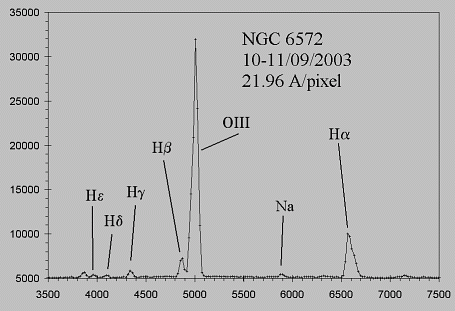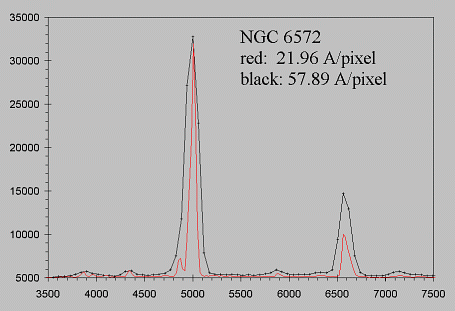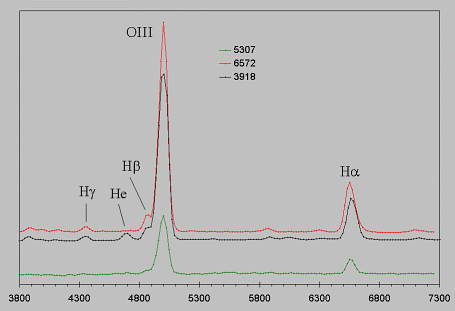
Spectroscopy of planetary nebulae
Note that, in general, instrumental response correction has not been applied to the planetary nebulae spectra shown on this page, although wavelength-calibration usually has been done.

Above: annotated spectrum of NGC 6572. The focus was slightly better than for the images obtained in May 2003 (see plot later on this page). Also, in IRIS, "l_sky" was used to remove the sky background gradient (no flat-field correction was applied) from the image before using "View Slice" to obtain an intensity profile of the spectrum.
Below: spectra at dispersions of 21.96 Å/pixel (as per above data), and 57.89 Å/pixel (from 19-20/9/2003). At the lower dispersion, line widths are greater, so that close lines are not resolved- note the blending of the OIII/Hb pair, and of the group near 3900 Å. Whilst the OIII/Hb lines are not resolved at the lower dispersion, there is a clear asymmetry to their blend, which - even if we did not know a priori of the existence of the Hb line near the OIII line- might suggest that a close pair of lines is present.


Plot of the spectra of planetary nebulae NGC 5307, 6572 and 3918, obtained in May 2003. Vertical axis is arbitrary intensity, horizontal axis is wavelength in Ångstroms .Dispersion for the first two was 21.2 Å/pixel, and 21.9 Å/pixel for 3918. These spectra have not been corrected for instrumental response, so it is not possible to make accurate estimates of line intensity ratios within a single spectrum, although such approximate ratios may be compared between the different spectra. Several points may be made: (i) the approximate intensity ratio of OIII to Ha is similar for all three PN; (ii) 5307 displays few features apart from the OIII and Ha lines, although it is possible that Hb may be detected on the blue side of the OIII line; (iii) the He line at 4686 Å is very clear in the spectrum of NGC 3918, but is very weak, if at all present, in the other spectra.